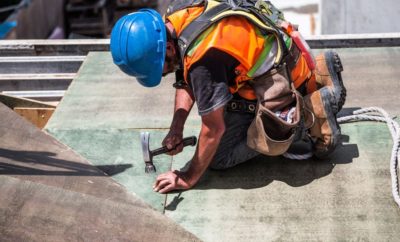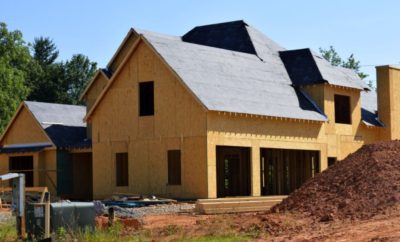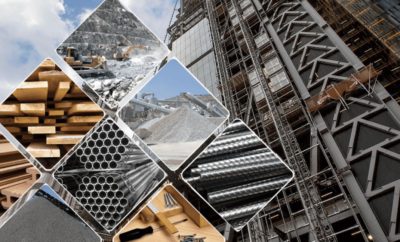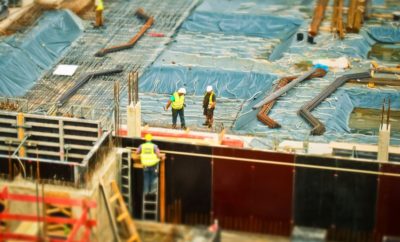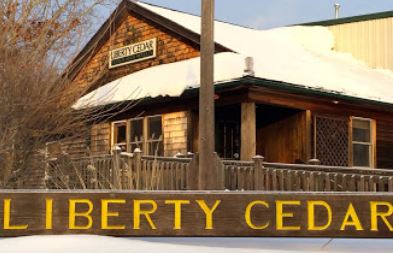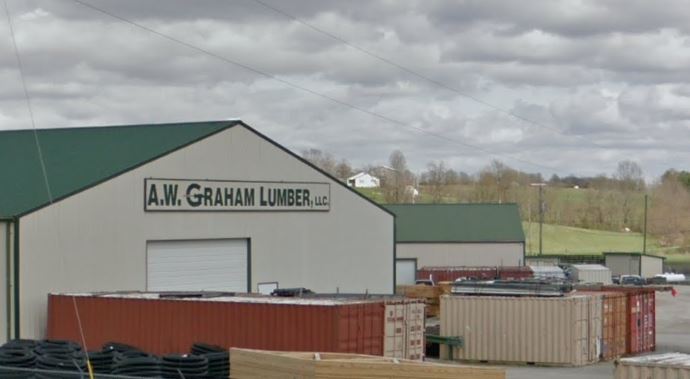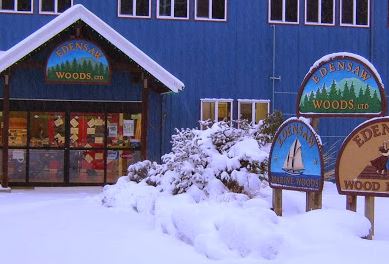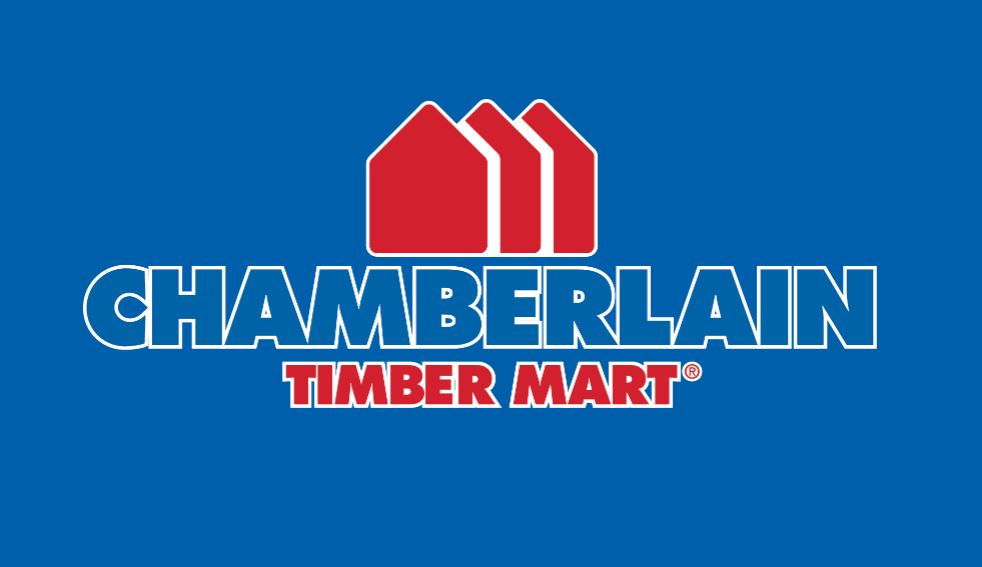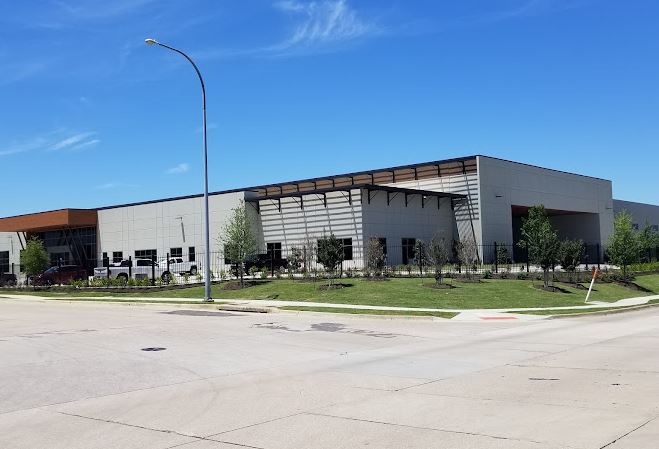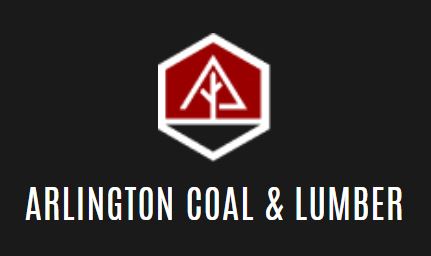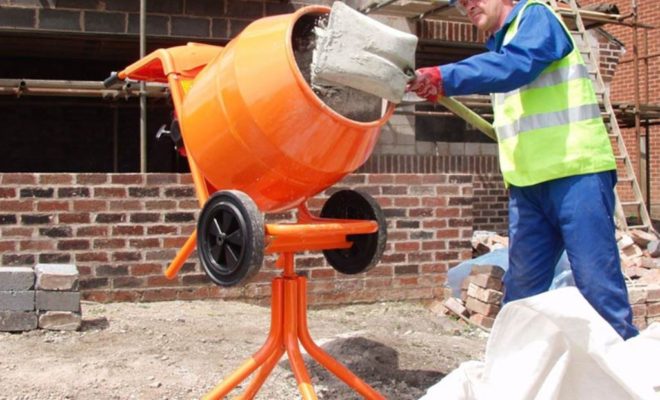
What is Concrete, Cement & Masonry?
Concrete
Concrete is a complete building material that can be used to construct foundation walls, concrete slabs, patios, and a variety of other masonry structures. It is unique in its versatility because it begins as a simple, dry mixture, then transforms into a flexible, semi-liquid material capable of forming into any mold or shape, and finally dries to the hard-as-rock material known as concrete.
Metal reinforcement, such as wire mesh or rebar, is used in many concrete structures to increase strength and reduce cracking, which can occur in solid concrete.
Cement, sand, and gravel, or other fine and coarse aggregate, are used to make concrete.
Water activates the cement, which is responsible for binding the mix together to form a solid.
You can buy ready-made concrete mixes in bags that contain cement, sand, and gravel and require only the addition of water. These are useful for small projects like anchoring fence posts or constructing small pads.
For large projects, you can either buy bags of cement and mix them yourself with sand and gravel in a wheelbarrow or other large container, or you can order premixed concrete delivered by a truck (commonly called “ready-mix” concrete).
Cement
Cement serves as the bonding agent in both concrete and mortar. It is typically composed of limestone, clay, shells, and silica sand, with limestone being the most common component. These materials are crushed and mixed with other ingredients (including iron ore), then heated to approximately 2,700 degrees Fahrenheit.
Clinker is a material that is ground into a fine powder and packaged for use in the mixing of cementitious building materials such as mortar and concrete.
Cement is sometimes referred to as Portland cement. This is due to the fact that it was invented in the 1800s in England by a mason named Joseph Aspdin of Leeds, who compared the color to the stone quarries on the island of Portland, off the coast of England.
Portland cement is still the most common type of cement used in building materials today. It is a “hydraulic” cement, which means it will set and harden when combined with water.
Mortar
Mortar is yet another building material made of cement, which is mixed with fine sands and water, and lime is added to increase the product’s durability. Adding water to this mixture activates the cement, causing it to harden or cure in the same way that concrete does.
Mortar is not as strong as concrete and is rarely used as a primary building material. Is it the “glue” that holds bricks, concrete blocks, stone, and other masonry materials together?
Brick & Fire Brick
A brick is a type of block used in the construction of masonry walls, pavements, and other elements. Properly, a brick is a dried clay block, but the term is now used colloquially to refer to other chemically cured construction blocks.
Bricks can be joined using mortar, adhesives, or interlocking. Bricks are manufactured in a variety of classes, types, materials, and sizes that vary by region and time period, and are mass-produced.
A block is a similar term that refers to a rectangular building unit made of similar materials as a brick, but it is typically larger. Lightweight bricks (also known as lightweight blocks) are constructed of expanded clay aggregate.
Fired bricks, also known as artificial stone, have been used since around 4000 BC and are one of the most durable and strong building materials. Air-dried bricks, also known as mud bricks, have a longer history than fired bricks and include a mechanical binder like straw.
Bricks are laid in courses and numerous patterns known as bonds, collectively known as brickwork, and may be laid in various types of mortar to hold the bricks together to form a long-lasting structure.
Concrete Block
Concrete block masonry, also known as concrete masonry unit (CMU), is superior to brick and stone masonry. Concrete blocks are made in the required shapes and sizes, and they can be solid or hollow. Concrete blocks are commonly available in 39cm x 19cm x (30cm or 20 cm or 10cm) or 2 inch, 4 inch, 6 inch, 8 inch, 10 inch, and 12-inch unit configurations.
Concrete, Cement & Stucco Mix
Masonry stucco is a cement-based plaster that is applied to walls and other surfaces both inside and outside of buildings. It is made of cement, sand, and lime and hardens into a highly durable material that requires little maintenance.
Stucco, like traditional decorative plaster, can be troweled, brushed, or otherwise textured to achieve a variety of finish effects. Stucco is typically applied over a galvanized wire mesh called lath, which helps the stucco adhere to the supporting structure and strengthens the entire assembly.
Stucco is usually mixed on-site and applied in three coats.
Fence Post Mix
Post Mix Concrete is a ready-mixed concrete made of cement and ballast. It’s also known as Postcrete, and it’s specifically designed for setting timber, concrete, or metal fence posts. It’s also great for smaller jobs around the garden where you need to secure objects like pots or ornaments.
Post Mix saves time and effort because the mixture is already prepared and ready to use. You’ll also end up saving money because you’ll only need what you need each time. Post Mix is available in convenient-sized bags, ready to mix whenever you need it, so you only need to buy what you’ll use.
Foundation Pads
Pads are a form of rectangular, square, or sometimes circular concrete “pads” formed from the spreading base that support locally-located loads, for example, structural columns or column groups or framed structures.
This charge is then distributed by the pad to the soil or rock layer underneath. The base pads can also be used to support the soil beams.
Several kinds of pad foundations exist:
Plain concrete
Plain concrete reinforcement pad base foundations are a cost-effective solution, only if the load is relatively light. These can also be called foundations. The principle is that the depth of the pad must be the same on both sides as the distance from the vertical element to the edge of the pad.
Reinforced concrete
Because of the reinforcement, pad foundations can be relatively wide but shallow. The pads are usually designed as a square plan area to make the reinforcing cage easier to construct and place. The main bars in the bottom of the reinforced concrete base are designed to span in one direction.
Rectangular pads can be used when the width of the base is limited or there is eccentric/inclined loading.
Combined column foundations
These are used when the outer column is close to a site boundary or an existing wall and combine two pad foundations into a longer one. The goal is to incorporate the balancing effect of the internal column. A rectangle is the most common plan shape.
Continuous pad
This is the point at which the pad foundations are joined together as a single long structural element. This is frequently the case when the pads and the columns they support are closely spaced.
Differential settlement can be resisted and longitudinal stiffness can be improved by extending the reinforcement between the pads.
Raft foundations are foundations that cover the entire footprint of a building.
Pad and ground beam
This is similar to a continuous pad, but smaller isolated pads are linked by ground beams. This contributes to increased structural rigidity.
Lintels
A lintel is a beam that is installed across openings in buildings such as doors, windows, and so on to support the load from the structure above. The lintel beam has the same width as the wall and is built into the wall at both ends. Lintels are classified according to the material used to build them.
In comparison to arches, horizontal lintels are less difficult to build.
Types of Lintel
- Timber Lintel
- Stone Lintel
- Brick Lintel
- Reinforced Brick Lintel
- Steel Lintel
- Reinforced Cement Concrete Lintel
Timber Lintel
Timber lintels were commonly used in construction in the past. However, in hilly areas, they are still used because they have been replaced by several modern techniques. The main disadvantages of using timber are that it is more expensive, less durable, and more prone to fire.
If the length of the opening is greater, it is provided by connecting multiple numbers of wooden pieces using steel bolts, as shown in fig (a). In the case of wider walls, it is made up of two wooden pieces held apart by packing pieces made of wood.
These are sometimes strengthened by the addition of mild steel plates at the top and bottom, which are known as flitched lintels.
Stone Lintel
These are the most common, especially where stone is abundant. The thickness of these is the most important aspect of its design. These are also provided over the openings in brick walls. Stone lintels are available in either a single piece or multiple pieces.
The depth of this type is kept constant at 10 cm / meter of span, with a minimum value of 15 cm. They can span up to 2 meters. Because of its low tensile strength, the stone lintel cracks when subjected to vibratory loads. As a result, caution is required.
Brick Lintel
When the opening is less than 1m and the loads are lower, these are used. Depending on the span, its depth ranges from 10 cm to 20 cm. Bricks with frogs are more suitable than regular bricks because frogs, when filled with mortar, provide greater shear resistance of end joints, resulting in a joggled brick lintel.
Reinforced Brick Lintel
When the load is heavy and the span is greater than 1m, these are used. The depth of the reinforced brick lintel should be 10 cm, 15 cm, or a multiple of 10 cm. The bricks are arranged in such a way that a 2 to 3 cm wide space is left between adjacent bricks lengthwise for the insertion of mild steel bars as reinforcement.
To fill the gaps, 1:3 cement mortar is used.
Every third vertical joint has 6 mm diameter vertical stirrups. The main reinforcement at the bottom is made up of 8 to 10 mm diameter bars that are cranked up at the ends.
Steel Lintel
When the superimposed loads are heavy and the openings are large, these are used. Channel sections or rolled steel joists are used for this. Depending on the situation, we can use a single section or a combination of sections.
When used alone, the steel joist is either embedded in concrete or clad with stone facing to keep the width of the wall the same. When more than one unit is placed next to each other, tube separators keep them in place.
Reinforced Cement Concrete Lintel
Because of their strength, rigidity, fire resistance, economy, and ease of construction, reinforced concrete lintels are now widely used to span the openings for doors, windows, and other openings in a structure.
These are suitable for all loads and spans of any length. The width is equal to the width of the wall, and the depth is determined by the length of the span and the magnitude of the loading.
The primary reinforcement is at the bottom, and half of these bars are cranked at the ends. To resist transverse shear, shear stirrups are provided.
Masonry Tools
Masonry is one of those home improvement skills that few people attempt to master. Drywall, electrical, plumbing, and painting are the most popular do-it-yourself projects, while masonry is frequently outsourced to skilled masons.
However, do-it-yourself masonry work can be extremely rewarding and creative. Aside from the satisfaction of seeing a job well done, one of the best aspects of doing masonry work is that its tools and materials are simple, inexpensive, and simple to understand.
Masonry work, as befits a trade that dates back to ancient Egypt, employs common materials such as crushed stone and limestone from the earth, as well as simple metal shaping tools. If you want to do your own masonry for fireplaces, walls, planters, or anything else that uses brick or stone, you’ll need to invest in a basic set of masonry tools and materials.
Common Masonry Tools
Margin Trowel
A margin trowel is a long, thin trowel used for heaping and spreading small amounts of mortar on stone. Margin trowels are used with narrow masonry units, such as manufactured stone veneer, to prevent excess mortar from spilling over the sides of the veneer units.
While not suitable for every masonry project, margin trowels are as close to a universal trowel as you can get.
V or Square-Notch Trowel
The v- or square-notch trowel is the workhorse of masonry jobs, with two straight sides and two notched sides. These notches, which can be square or V-shaped, function essentially as a metered system for dispensing mortar across a flat surface such as cement board.
It would be nearly impossible to disperse the mortar at even rates if you tried to dispense it with the flat edge of a trowel. By pressing the trowel’s notches flat against the surface, the mortar extrudes evenly from the notches.
Cold Chisel
A cold chisel has a wide, flat head that is ideal for slicing bricks or veneer stone in half with a hammer blow. A cold chisel can also be used to chip away excess mortar or to remove a single brick from a brick wall. Cold chisels typically have plastic handles to absorb the shock of a hammer blow.
Brick Hammer or Mason’s Hammer
For masonry work, you’ll need a hammer, and you should never use a carpenter’s hammer. Not only will you risk damaging your nice, expensive carpenter’s hammer, but it will also be ineffective for masonry work.
You’ll need a specialized tool known as a brick hammer or a mason’s hammer.
A brick hammer has a blunt side for tasks like chopping bricks or stones in half with a single, powerful blow. The opposite side is smaller and is used for scoring lines for more accurate breaks.
Wire Brush
Not all masonry tools are made for hammering, chopping, or cleaving. A wire brush is essential for brushing away rock chips or concrete crumbs that accumulate in your work zone when doing masonry work. For example, when you chip open a crack in concrete before repairing it, a stiff wire brush and a shop vacuum are about the only tools you’ll need to remove all of the debris.
Rebar & Remesh
Reinforcing bars, also known as rebar, are steel bars that are added to and embedded in masonry to increase its strength. Larger projects, such as concrete sidewalks, require the use of rebar.
In its most refined form, wire mesh is made of reduced disfigured steel. The wire mesh is used to improve the toughness and robustness of the concrete. When the concrete settles, wire mesh is crucial in providing the necessary support. It also keeps cracks and crevices at bay.
Stucco Tools
Trowel
The trowel is the most important tool in the stucco repair tool kit. This is a common type of tool found in any mortar or cement application. Trowels are available in a variety of sizes and shapes. Two different types of trowels are required for stucco repair. A rectangular flat-edged trowel with a flat edge is required. The other is a smaller, triangular-shaped trowel with a pointed end. This trowel is used for smaller jobs as well as shaping the stucco to match the rest of the exterior.
Float
This is yet another tool used in mortar and cement applications. The float is essentially a flat trowel used to smooth the surface of the material being used. While the majority of homes with stucco siding have a swirl pattern, there are times when a flat, smooth surface is preferred.
Chisel
In many cases where stucco repair is required, large amounts of damaged stucco must be removed. This is easily accomplished with a flat chisel or a scraper. When using a chisel, make sure the edge does not dig into the sheathing underneath, but rather slides under the stucco to pry it up.
Bucket and Flat Board
Stucco mixing can be a messy business. Having a few five-gallon buckets dedicated to this task will ensure that you not only always have a container to mix the stucco in, but that you can also do it with the least amount of mess. A flat board can also be used to spread the stucco on the wall. To apply, gather stucco on the board and trowel it onto the home.
Paint Cans or Stucco Pigment
If your house has colored stucco on the outside, you should stock up on the pigment that is used to create the color. When repairs are required, you can always be certain that the correct color will be used.



